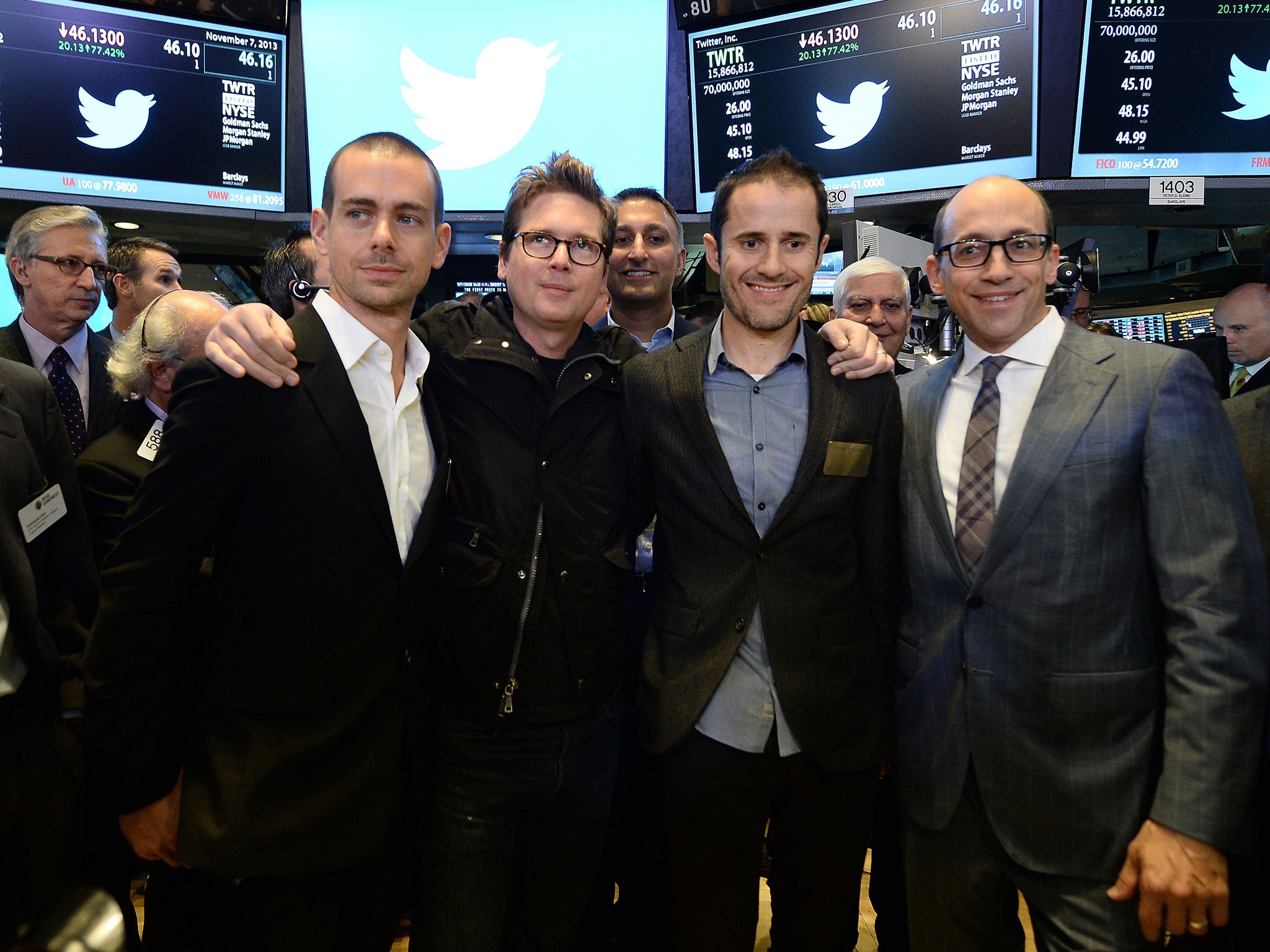What went wrong at Twitter in four charts
If Twitter doesn't get its act together, it may yet be overtaken by fast-growing competitors

Twitter’s share price proved to be the most reliable indicator of what investors want from Jack Dorsey as he returns to the top spot at Twitter, following the news that Dick Costolo, CEO, is going to step down from his post on July 1.
Shares jumped between 6 and 7 per cent following the announcement of Costolo’s departure, but moderated to just 2 per cent higher after Dorsey stated that there would be no change in strategy.
Ever since Twitter went public in November 2013, investors want reassurance that Twitter can grow its $23.5 billion market cap.
They’re looking for the next Facebook – but up to now, it’s not been clear that Twitter will take that mantle.
The pressure is on for Twitter to build products that will snag more sign-ups.
Twitter has 300 million monthly active users – around the same number as Instagram, but both are dwarfed by Facebook, which has 1.4 billion active users. It still has more active users than Google+, Instagram and LinkedIn – but only just.
Investors also want users that are engaged.
Over half of all internet users are signed up to Twitter – though less than half that amount are active users. Over 80 per cent of internet users are signed up to Facebook, by contrast, and about half of these are engaged.
Over the last year, Twitter’s growth has been far outpaced by smaller sites like Pinterest and Tumblr – leading some to believe that if it doesn’t get its act together, it may yet be overtaken by its fast-growing competitors.
However it’s possible to be too focussed on user-growth as a key measure of Twitter’s worth.
Richard Windsor, a technology analyst at Edison Investment Research, said the biggest problem for Twitter is that it only serves a limited function for internet users. Edison research suggests that users can spend just 9% of their time with Twitter because Twitter has no service for many of the other activities that users carry out on their smartphones.
“For Twitter, the monetisation opportunity is fundamentally limited unless it can spread its wings wider and encourage users to spend more time in its services,” Windsor said.
Twitter seems to agree with this view. In his last quarterly earnings call, Dick Costolo said Twitter’s objective is to “build new applications and services in order to increase Twitter's utility around the world”.
Twitter missed revenue expectations in the first three months of 2015, causing its share price to tumble as much as 26 per cent – partly due to its results being leaked earlier than expected.
It blamed the fall in revenues in a change to the way it measures engagement with advertising, from measuring views, to measuring clicks.
Twitter is building new products that will add functions to the site, beyond 140 characters. Periscope and Vine have added video functionality to tweets and allow videos to be watched in the app, keeping eyes on the site.
Twitter is also getting rid of the 140 character limit on direct messages in the hope that users will stay put when they want to chat, instead heading straight for its rivals.
Subscribe to Independent Premium to bookmark this article
Want to bookmark your favourite articles and stories to read or reference later? Start your Independent Premium subscription today.

Join our commenting forum
Join thought-provoking conversations, follow other Independent readers and see their replies